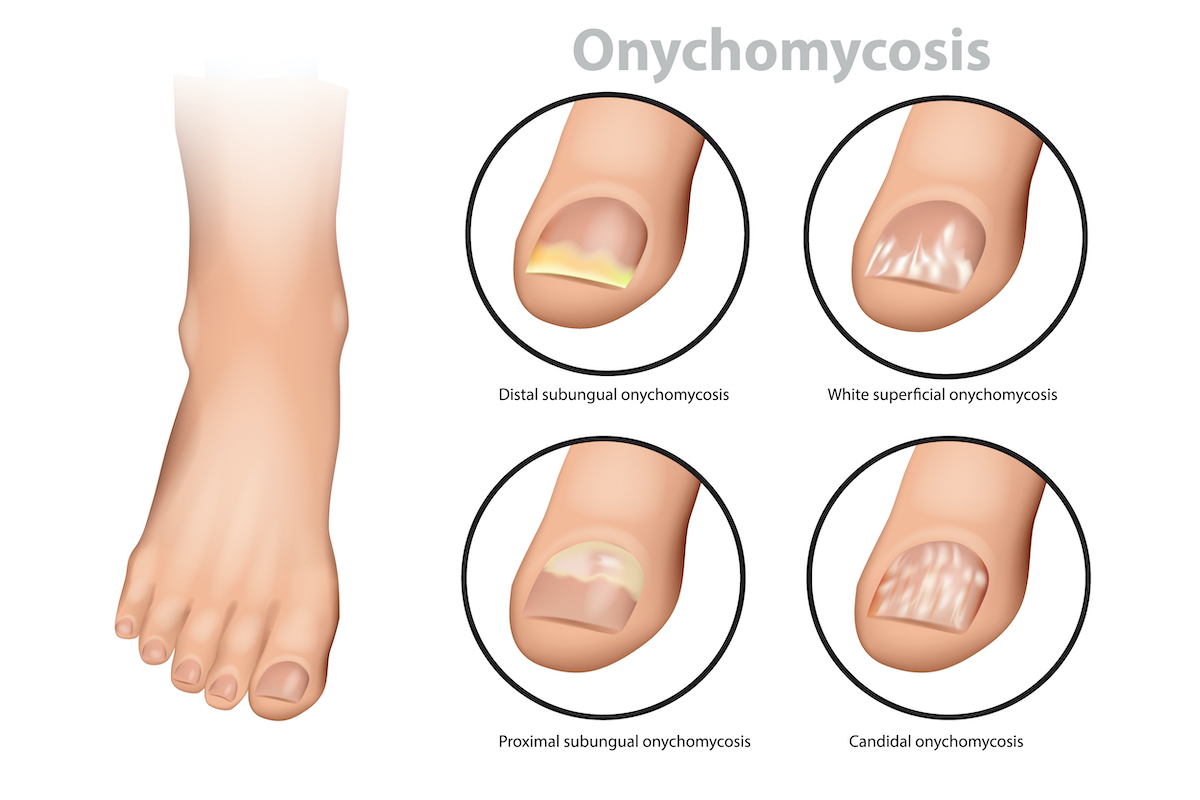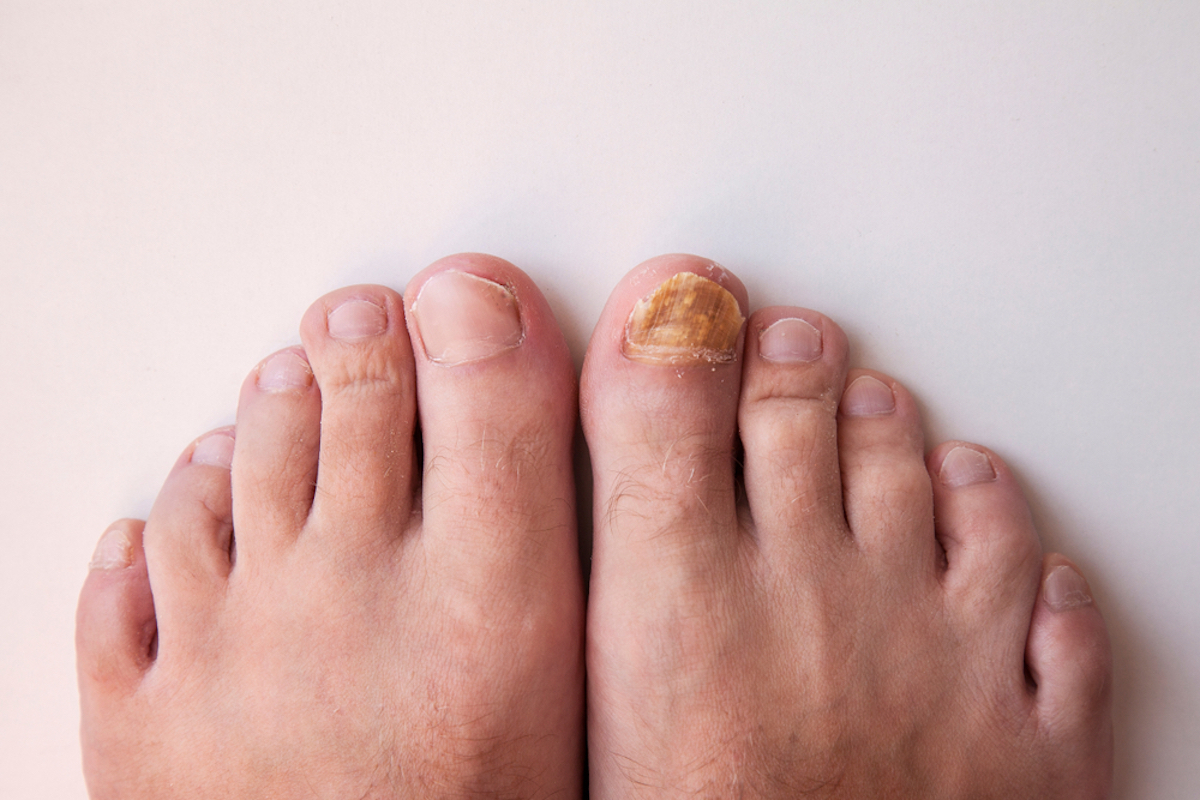Tinea unguium or onychomycosis – the medical term for nail fungus – is a fungal infection that affects the nail. Having a (toe)nail infection is nothing to be ashamed of because about 10% of the adult population struggles with this health problem, in other words, 1 in 10 adults have a nail fungus. In people over 70, this is as high as 1 in 2, meaning 50% of people over 70 have one (or more) nail fungi. The fungus infection is contagious and is spread via direct contact, so be warned. Make sure you recognize the symptoms and know their causes because the sooner you start treatment, the better your chance of getting rid of it.

What Is Toenail Fungus?
Nail fungus occurs when a fungal infection or a dermatophyte (in most cases) gets between the nail and the nail bed. This can happen when the nail has a crack or cut. Fungal nails are most common in toenails, but fingernails can also become infected. Toes are usually warm and damp, which are the perfect conditions for fungus to grow. Different fungi and sometimes yeast affect different parts of the nail. There are a few factors that increase the risk of getting nail fungus. For example, men are more likely to have fungal nails than questions, and the chance is also higher as you age. Other risk factors include:
- People who suffer from diabetes
- Having psoriasis
- People with athlete’s foot
- Having a weakened immune system
- People who suffer from hyperhidrosis
- People who suffer from poor blood circulation
- Smokers
- Genetics
- Toe/nail injuries
- People who spend a lot of time in the water
Types of Toenail Fungus
Fungal nail infections are categorized into 4 types. These are based on where the infection originates and how it’s caused. The types are:
- Distal subungual onychomycosis (DSO); infects the nail bed as is caused by the same fungi that cause athlete’s foot.
- White superficial onychomycosis (WSO); infect the top layer of the nail.
- Candida onychomycosis; infect the nail and the skin bordering the nail and is caused by a yeast infection.
- Proximal subungual onychomycosis (PSO); infects the base of the nail and is caused by dermatophytes and is common among people with HIV.
Before you start treating something, you need to know what it is and how you can recognize it. Nail fungus is often easy to recognize. The first symptom is that the nail is thicker than usual, and it could be oddly shaped. Other symptoms of (toe)nail fungus include yellow or brown-looking nails, white dots appearing on the affected nail, and the nail breaking easily or separating from the nail bed. In addition, the fungus can also infect the skin around the nail.

Remedies for Nail Fungus
When you recognized the symptoms, you can first start with non-prescribed options to treat the nail fungus. Know that you need a lot of patience when you’re treating this because nail fungus is difficult to get rid of. In fact, if you get rid of the infection, chances are pretty high that it returns after a while – especially if you’ve diabetes or a weakened immune system. Non-prescribed treatment options include the use of essential or ozonized oils, mouthwash foot or finger baths, applying crushed/ chopped garlic on the infected nail, and using over-the-counter antifungal medication.
Should none of this help, it’s time to stop by your professional healthcare provider to present your health problem. He or she will first test if you have a nail fungus and in case it is, set up de the right treatment plan, which includes prescribed antifungal pills, which you’ve to take for several months.
Prevent Nail Fungus
Remember the following prevention tips well and in this way reduce the risk of fungal nails.
- Avoid walking barefoot in public spaces, like showers, swimming pools, or locker rooms
- Wear flip-flops in the shower when a family member has nail fungus or use another shower
- Be very careful when clipping nails.
- Clean nail trimmers before usage
- Don’t tear or rip toenails
- Keep your foot/fingers dry
- Cut nails under the shower or put them in a warm bath, before cutting
- Cut nails straight across
- Wear shoes that fit correctly
If a nail fungus is left untreated, the infection can spread to other nails or the skin. It’s important to find a remedy that suits you and treats this nail problem effectively. For more information about (toe)nail fungus and how and where to get treatment, start your online research here:

